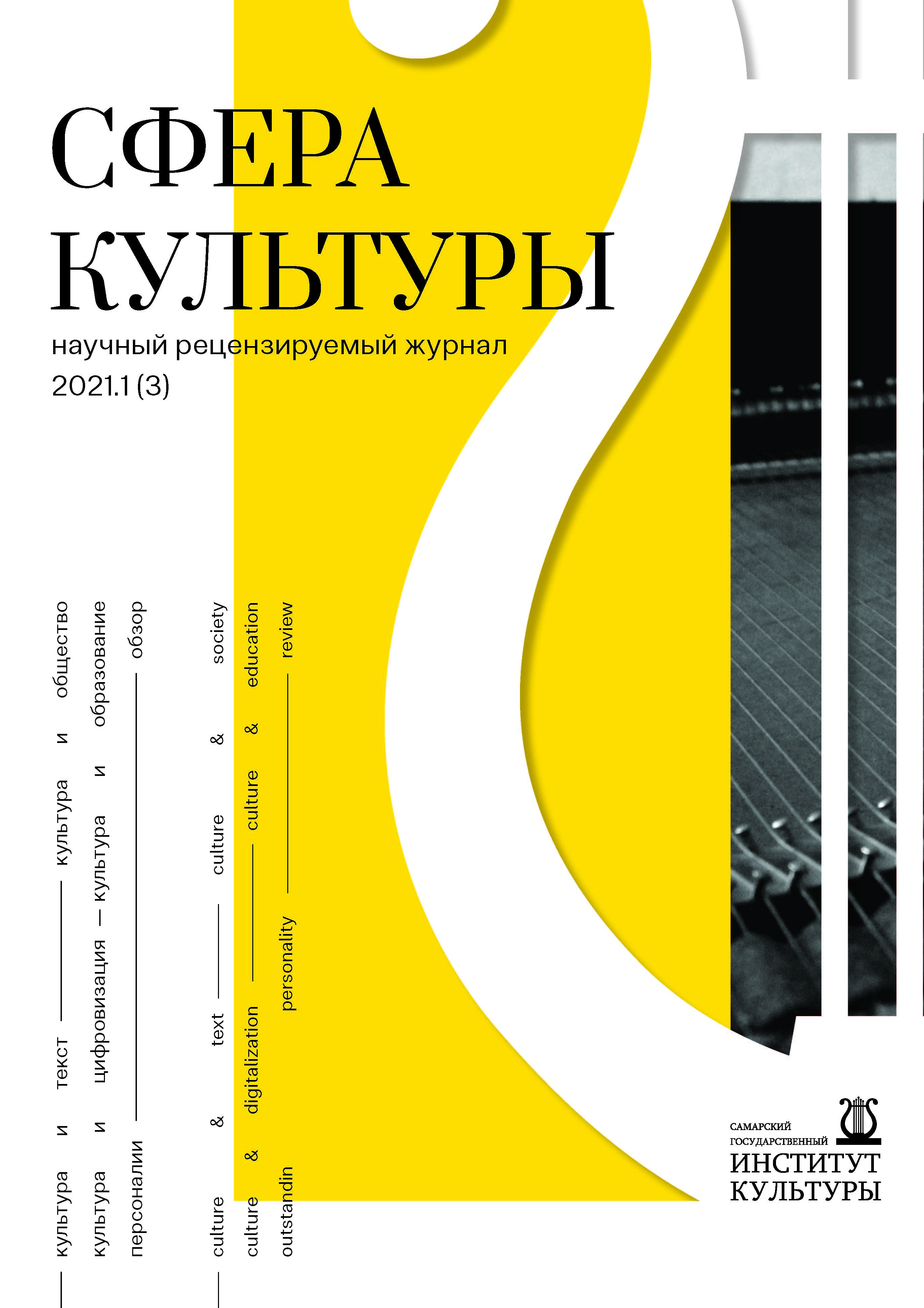卷 2, 编号 1 (2021)
- 年: 2021
- ##issue.datePublished##: 15.05.2021
- 文章: 11
- URL: https://journals.eco-vector.com/2713-301X/issue/view/4315
完整期次
Articles
Three epigrams by A.P. Sumarokov in the May issue of the journal “The Industrious Bee” (1759): the historical and cultural context
摘要
Much of the literature concerning Sumarokov’s journal «The Industrious Bee» often highlights its satirical orientation. Often the genre of epigram is noted as corresponding to this satirical pathos and to the topicality of the journal’s publications. In contrast, this article suggests a new perspective, focusing on Sumarokov’s epigrams that were published in the May issue. Historical-typological, cultural-historical, biographical, and comparative-historical methods are used to reconstruct their historical and cultural context. The authors find that Sumarokov formally follows the main generic features of the epigram. The text of each epigrams is intended for the general reading public. The subject of each epigrams is an original interpretation of a common place. At the level of poetics, the emergence of a new genre section of several texts is a special way of their cyclization. This method is based on the intuitively found by the publisher balance of socially significant and intimate contexts.
 13-20
13-20


V.M. SHUKSHIN’S VIEW OF L.N. TOLSTOY’S «THOUGHTS ABOUT WRITING»
摘要
 21-25
21-25


WINE TRADE AND THE ASSIMILATION OF NEW CULTURAL PRACTICES IN RUSSIA OF THE LATE XVIII - EARLY XIX CENTURIES
摘要
 29-35
29-35


GLOBAL CRISIS AND THE CREATIVE INDUSTRIES IN AN ERA OF CHANGE
摘要
 36-44
36-44


THE WORK OF ART IN A SOCIETY OF RISK
摘要
 45-51
45-51


THE GENEALOGY OF THE CITY IN LIGHT OF THE IDEA OF THE «MIDDLE»
摘要
 52-58
52-58


TRENDS IN THE APPLICATION OF DIGITAL TECHNOLOGIES IN THE SPACE OF A MODERN MUSEUM
摘要
 61-68
61-68


FUNCTIONS OF THE UNIVERSITY LIBRARY IN THE CONTEXT OF THE DIGITIZATION OF EDUCATION
摘要
 69-75
69-75


THE USE OF MODERN VISUAL AIDS FOR DEVELOPING CULTURAL COMPETENCY AMONG STUDENTS OF SECONDARY VOCATIONAL SCHOOLS
摘要
 79-88
79-88


THE INTERMEDIALITY OF HARRY GORDON’S POETRY
摘要
 91-100
91-100


SAMARSKIY ITOG II MEZhREGIONAL'NOGO FORUMA «ROD AKSAKOVYKh - GORDOST' OTEChESTVA» (10-12 NOYaBRYa 2020 g.)
 103-106
103-106











